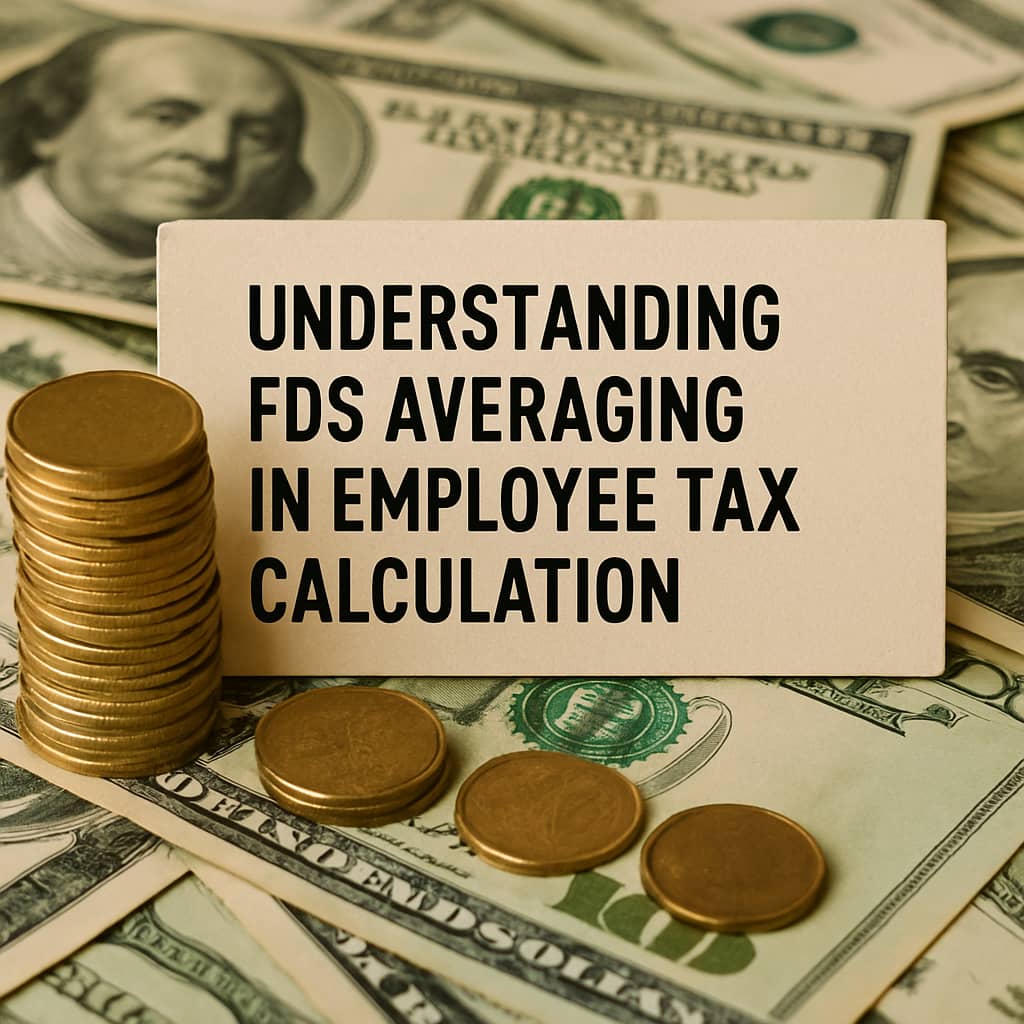
Understanding FDS Averaging in Employee Tax Calculation
Understanding FDS Averaging in Employee Tax Calculation
Calculating employees’ tax (PAYE) under the Final Deduction System (FDS) can be complex, and choosing the right method is crucial for employers and payroll administrators. Two commonly used methods are averaging and forecasting. This guide focuses on the averaging method, explaining how it works and why it might be the better option for payroll management.
What is FDS?
The Final Deduction System (FDS) is a tax calculation method that ensures employees’ tax liability is calculated on total earnings as they are paid throughout the year. Once an employer selects a method (either Averaging or Forecasting), they must stick to it for the entire tax year.
Key Elements in Tax Calculations
Before diving into how the Averaging Method works, let’s break down the components of PAYE calculation:
1. Regular Earnings
Regular earnings include a fixed monthly salary and allowances, for example, housing or transport allowance. These earnings are predictable and annualized for tax calculations (i.e., multiplied by 12 to estimate yearly income).
2. Allowable Deductions
Before calculating tax, certain statutory deductions are subtracted from the gross income, including:
- NSSA (National Social Security Authority) contributions
- NEC (National Employment Council) levies
- Trade Union fees
- Pension contributions
3. Irregular Earnings
Irregular earnings refer to payments that are not received regularly, such as Cash in Lieu of Leave (CILL) or Acting allowance. Unlike regular earnings, these figures are not annualized but are simply added to the annual taxable income in their exact amount. This ensures that the irregular income is appropriately accounted for in the total taxable income.
4. Bonuses
These are also treated as irregular income. The tax-free portion, which is currently $700 USD or ZWG equivalent, is first deducted, and the remaining taxable amount is included in the total taxable income for that specific period. The tax on this taxable bonus portion is then calculated in a similar manner to how irregular earnings are handled.
5. Tax Credits
Tax credits reduce the total tax payable and are available for specific employees, such as:
- Elderly persons (who are 55+ by the 31st of December of the previous year), mentally or physically disabled persons, and blind persons.
- Employees who incur medical expenses or contribute to medical aid for themselves or their immediate family—defined as their spouse, children under 18, or child students—are eligible for a tax credit equal to 50% of their contributions or expenses.
How the Averaging Method Works
The Averaging Method calculates PAYE by taking the employee’s total taxable income earned to date, averaging it, and projecting it over the full year. This estimated annual income is then taxed using the applicable annual tax rates. By spreading the tax liability evenly throughout the year, this method helps maintain consistent and predictable PAYE deductions each month.
For a step-by-step guide and a practical example, refer to our detailed manual here: Belina PAYE Averaging Method Manual
Comparison: FDS Forecasting vs. FDS Averaging
Both methods calculate PAYE; they handle income fluctuations and irregular income tax deductions differently:
- FDS Forecasting: Estimates future earnings and applies tax based on projected income. The taxation on irregular earnings is spread over the remaining months of the year.
- FDS Averaging: Uses average taxable income to date, smoothing out tax fluctuations. The taxation of irregular earnings will be taxed in the month in which the employer pays them.
Conclusion
The Averaging Method under FDS is Belina’s preferred FDS Tax method for the year 2025. We also recommend that clients adopt the same tax method in TaRMS to ensure tax alignment. By Ashlene Moyo



